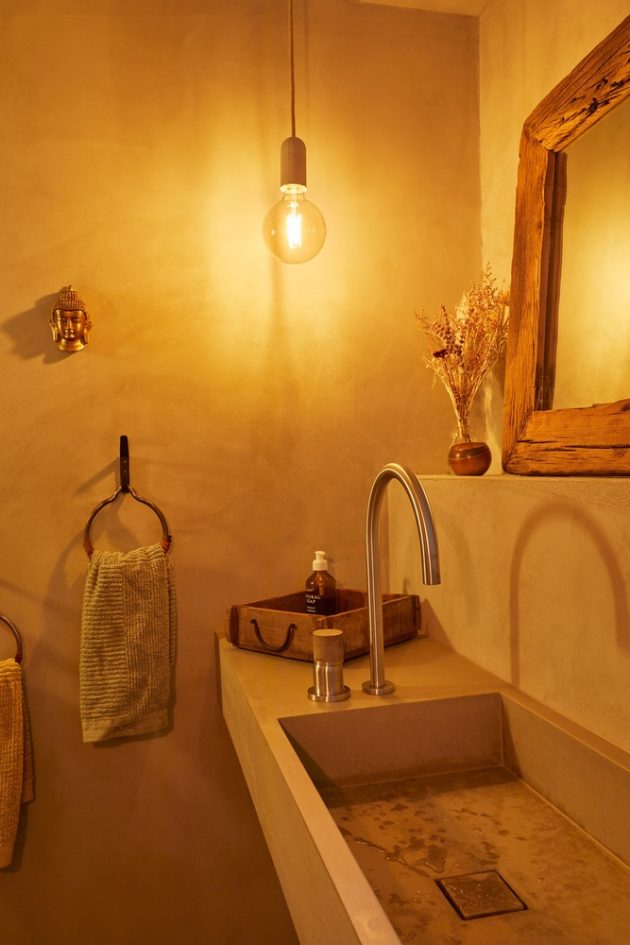Project: Residential Barn
Architects: BE ARCHITEKTUR GMBH
Location: Zurich, Switzerland
Area: 2,314 sf
Year: 2022
Photographs by: Vito Stallone
Residential Barn by BE ARCHITEKTUR GMBH
The Residential Barn, designed by BE Architektur GmbH in Zurich, Switzerland, pays homage to the historical context of the rural hamlet it’s part of. The building, surrounded by around 15 structures in the area, gracefully blends with its rustic surroundings. The exterior facade is sheathed in glazed spruce wood, reminiscent of traditional Swiss barns, while the pitched roof, complete with local tile roofing, stays true to the local architectural style. The windows are concealed behind wooden shutters, and generous fixed glazing is protected by wooden sliding doors that offer sun shading, darkening, and privacy. A raw steel beam functions as a gutter, and rainwater flows off the roof’s side like a waterfall.

Around 15 buildings form a hamlet zone in a rural, mainly agricultural setting. This new home in the hamlet feels obliged to honor the area’s historical context.
Typical barn characteristics were taken up and reinterpreted in a modern way. From a distance, the residence discreetly blends into its rustic surroundings. The exterior facade is clad in glazed spruce wood – the same type of timber used on traditional Swiss barns. A pitched roof was designed in the same vein, with tile roofing typical to the local architecture. Openable windows are concealed behind wooden shutters, while the generous fixed glazing is fronted by wooden sliding doors that provide sun protection, darkening, and privacy. A raw steel beam serves as a gutter, jutting out beyond the base of the roof. Downpipes were omitted; the rainwater drains off the side like a waterfall.
The building responds to the topography of the site. Building on a slope usually requires excavation behind the building and backfilling in front; this approach was deliberately rejected. Instead, the ground floor is arranged in a series of levels at different heights to follow the existing slope.
A barn is typically used for storage and as a workroom for agricultural production. Although this new building is not a depository, its rooms – bedrooms, bathrooms, closets, etc. – are “stored” within it as closed volumes and are figuratively stacked on top of one another. This “stacking” creates a sculptural interior, a positive spatial volume within the building. A negative volume forms around these stacks, comprising a landscape of open living spaces that are interconnected vertically and horizontally. A generous interior unfolds with a sense of endless expanse.
The new building reinterprets the simple, unadorned nature of a traditional barn through its choice of materials. Exposed concrete slabs for the floor and a special plaster covering the walls ensure a raw, unfinished feel. Two different materials with a similar effect – concrete and plaster – are used throughout the interior to achieve an expressive effect.
The freestanding two-car garage in exposed concrete was created using the same timber formwork as that used for the house facade. A photovoltaic system was installed on the gently sloping concrete gable roof, the solar panels covering the surface like a carpet.
The new home enters into a thematic dialogue with the surrounding agricultural buildings for a unique interpretation of the vernacular barn typology.






























